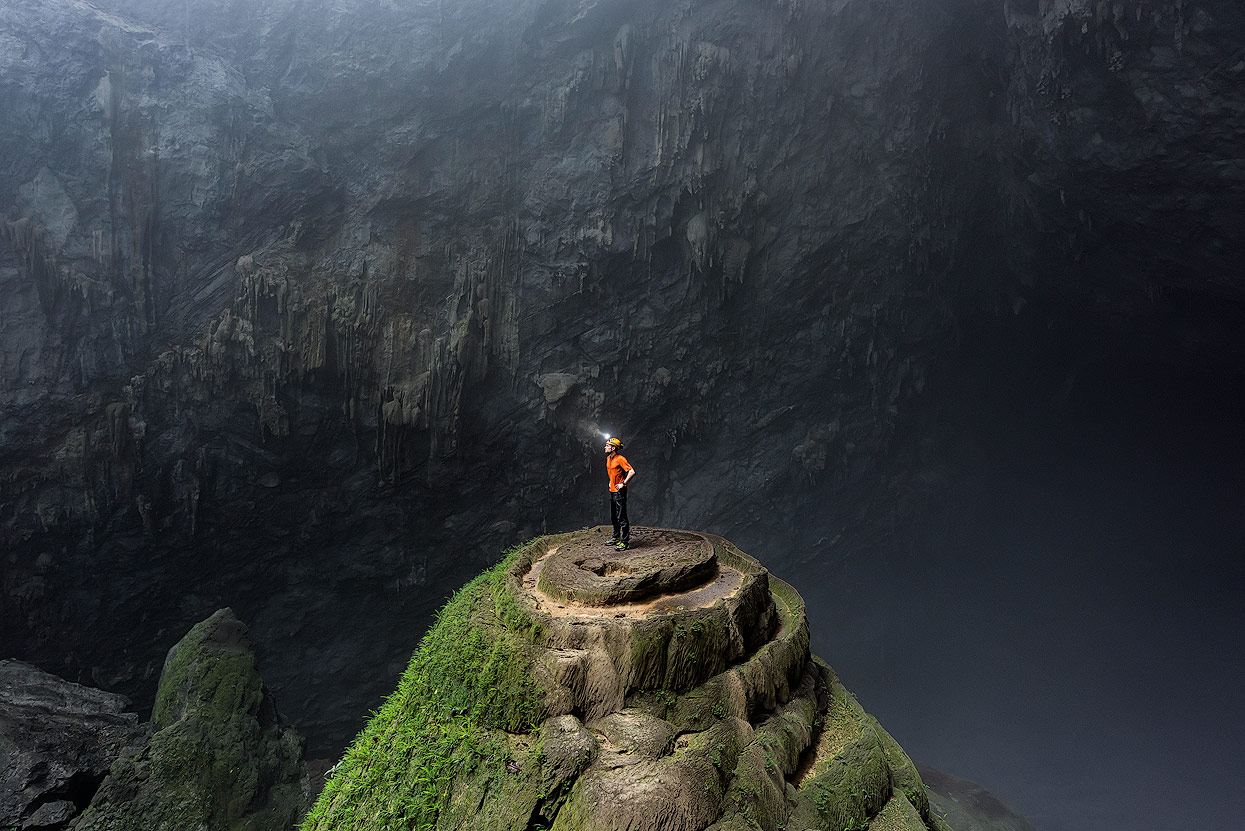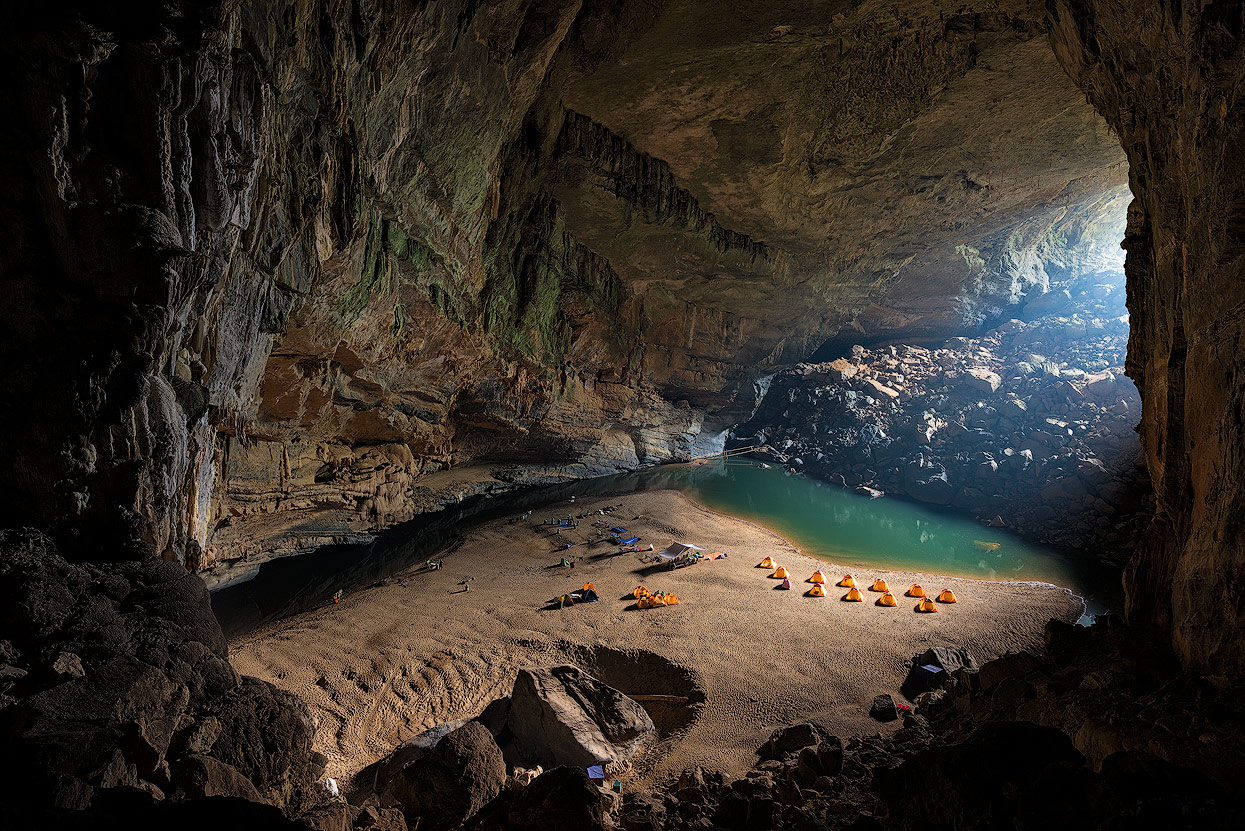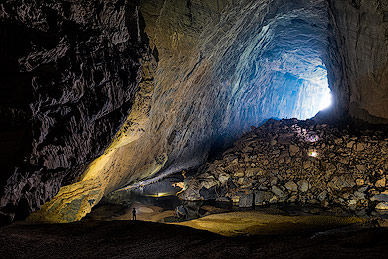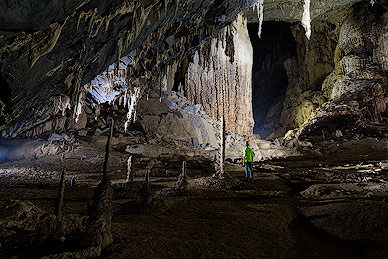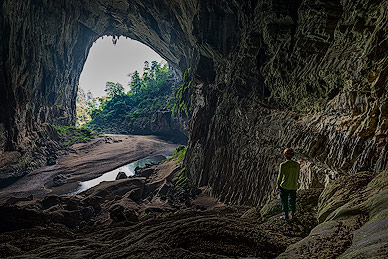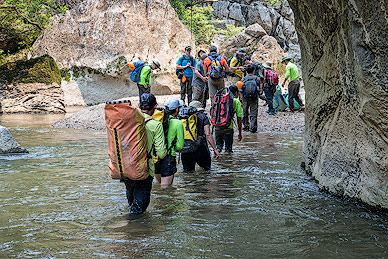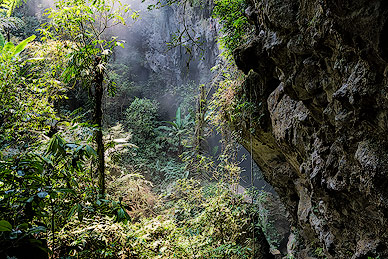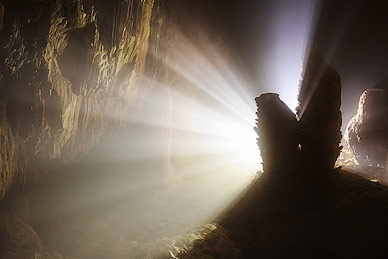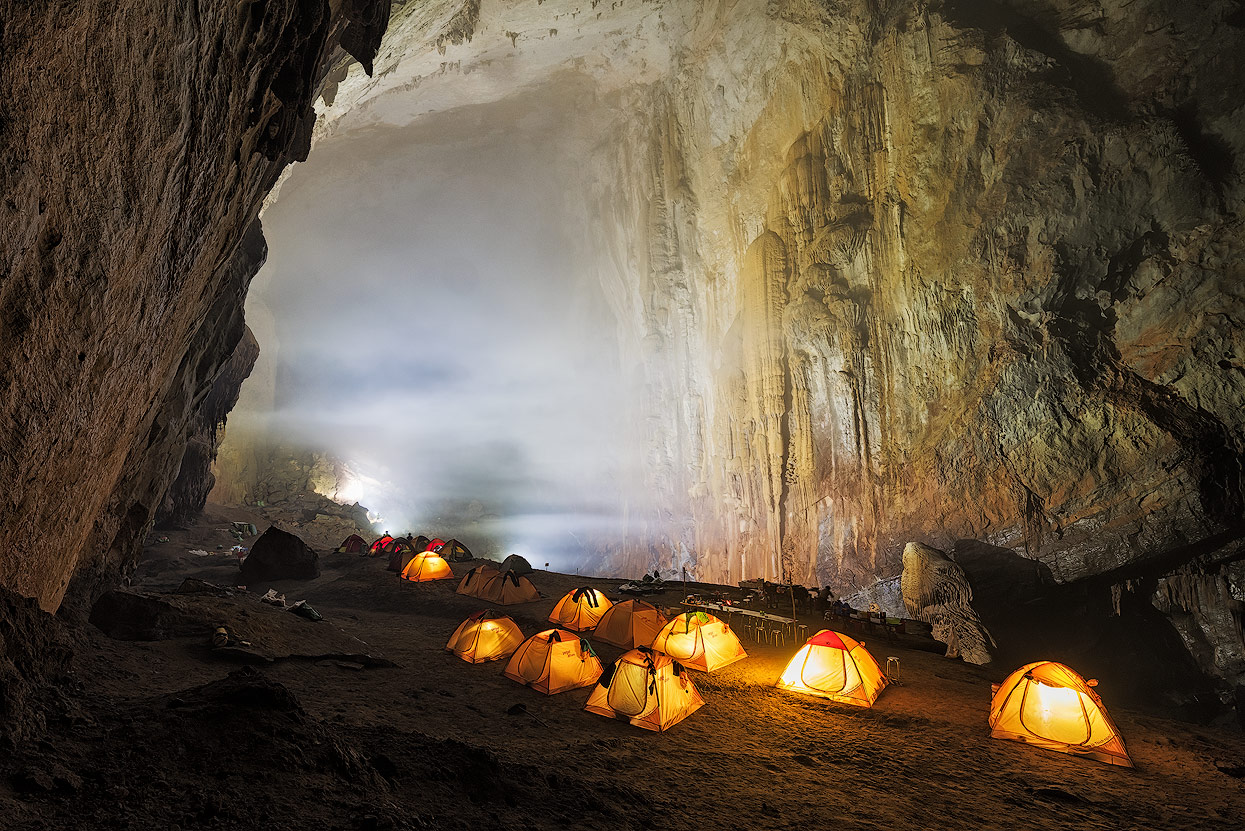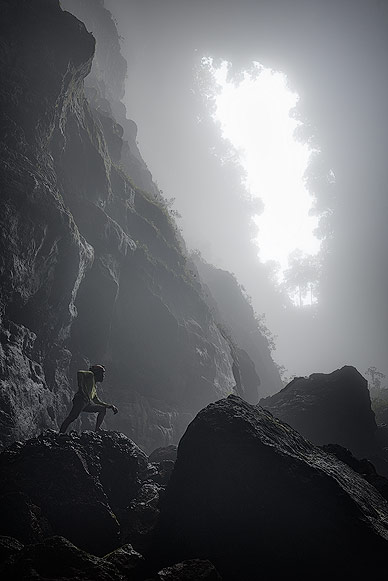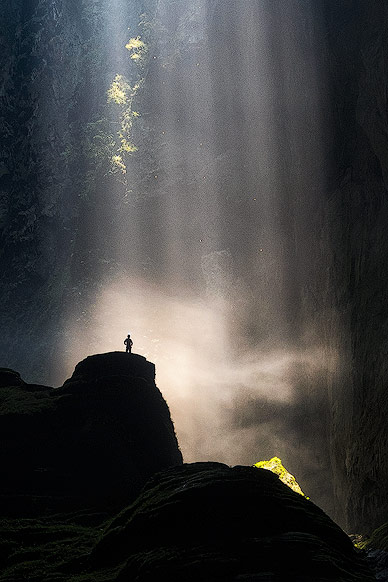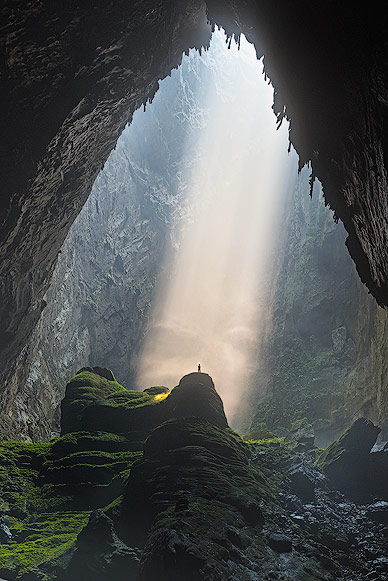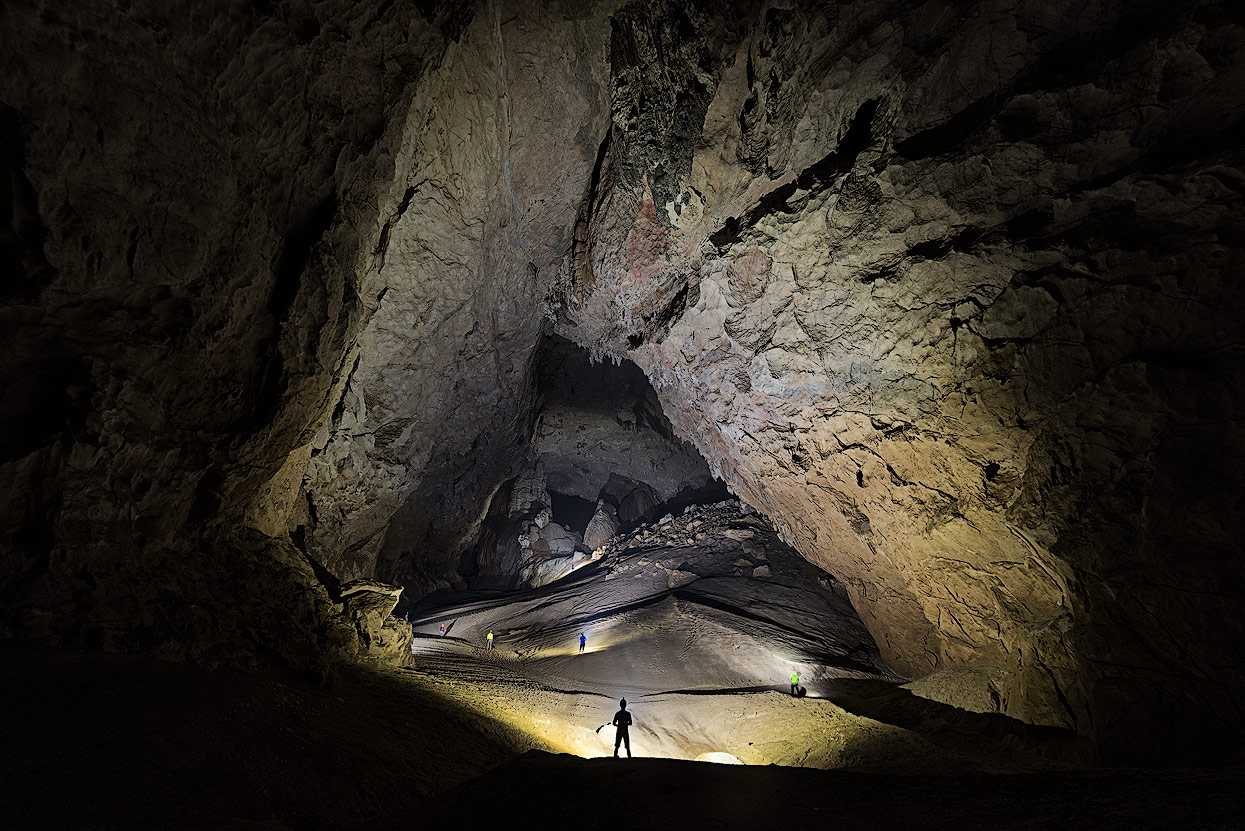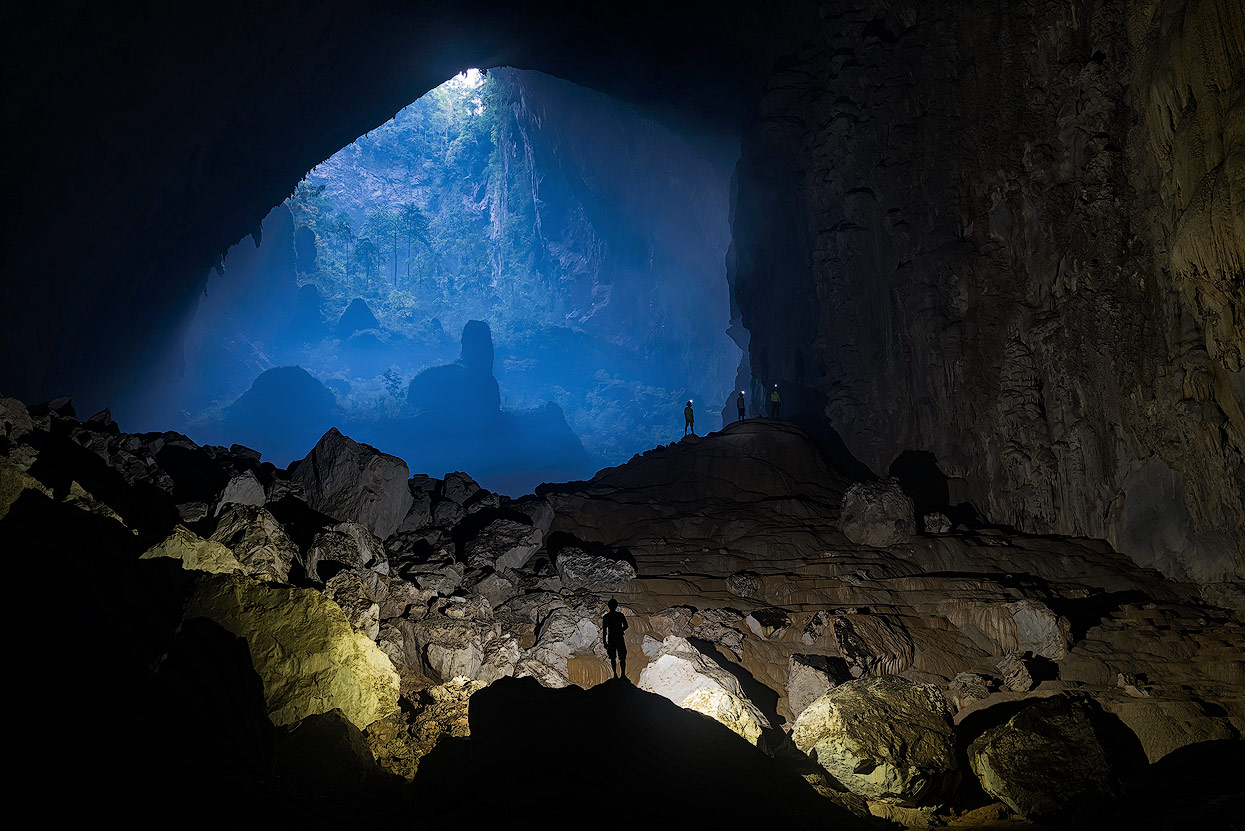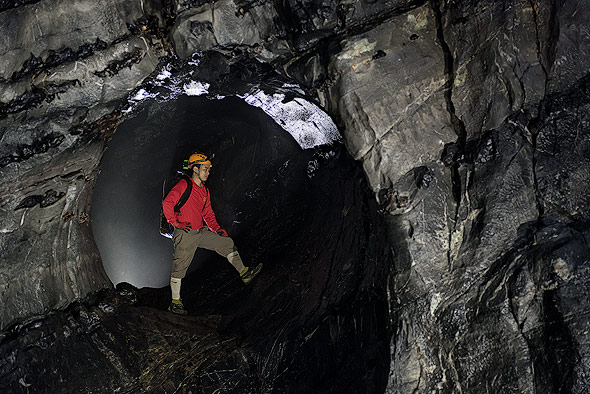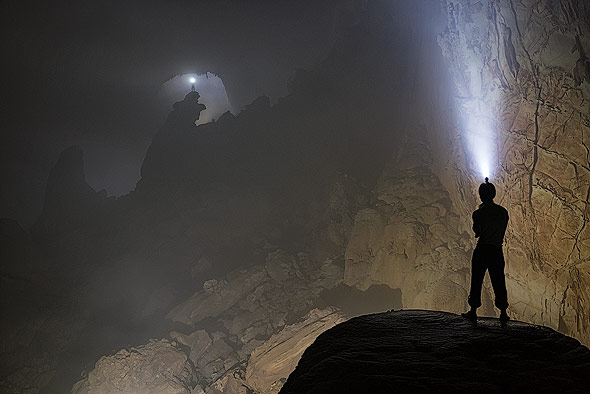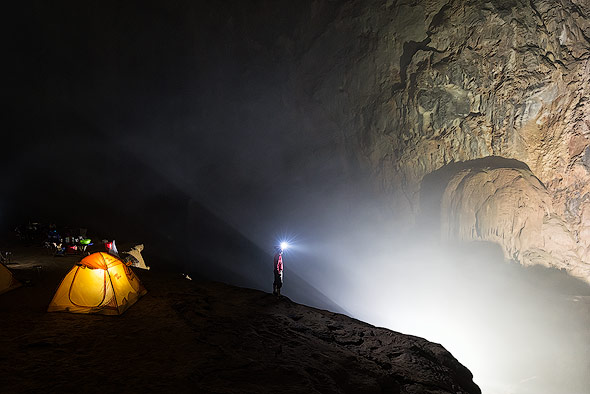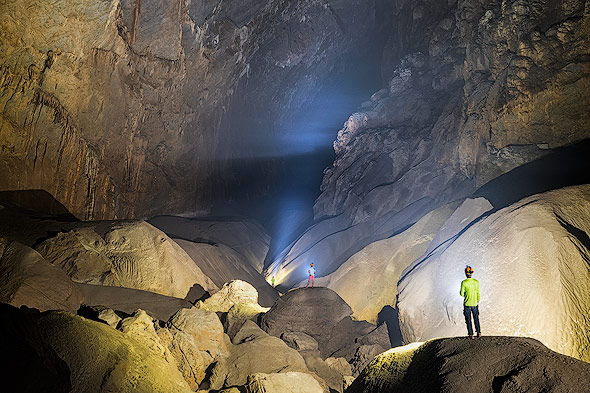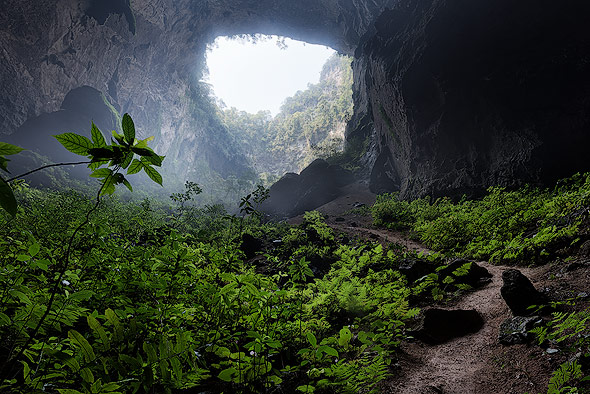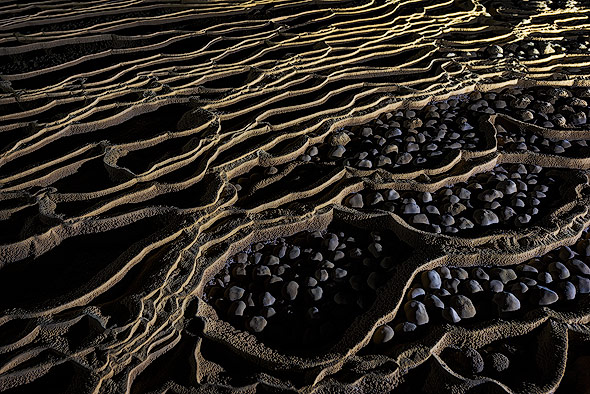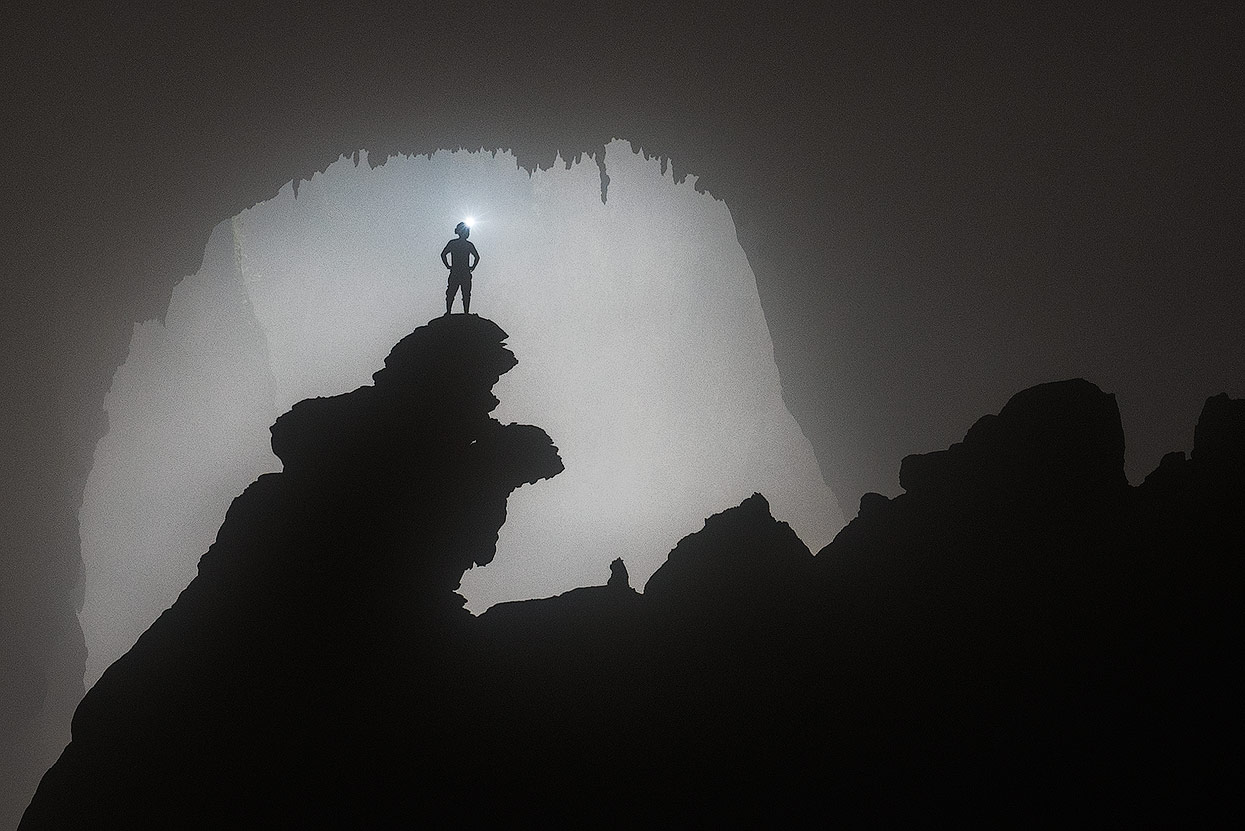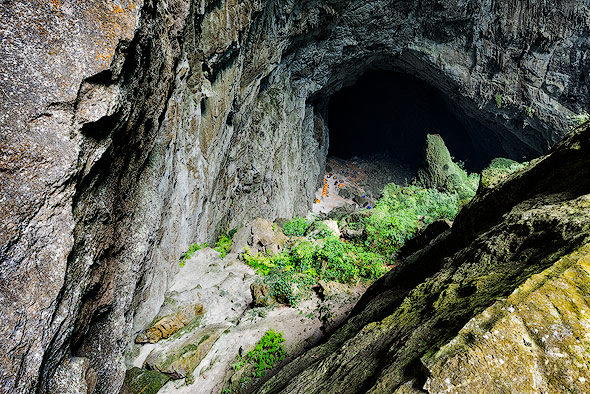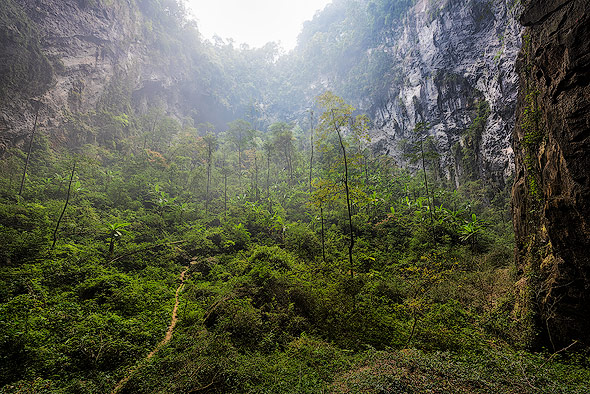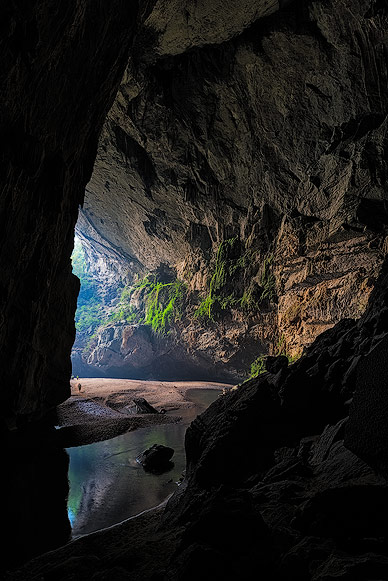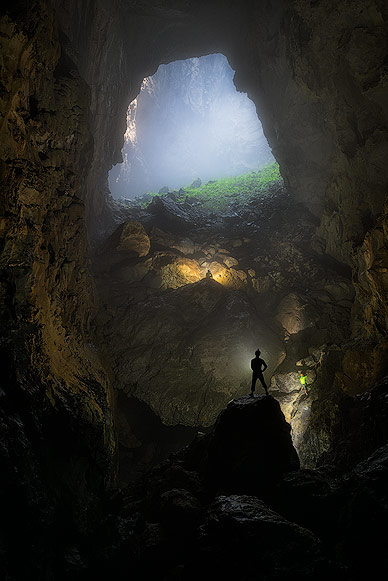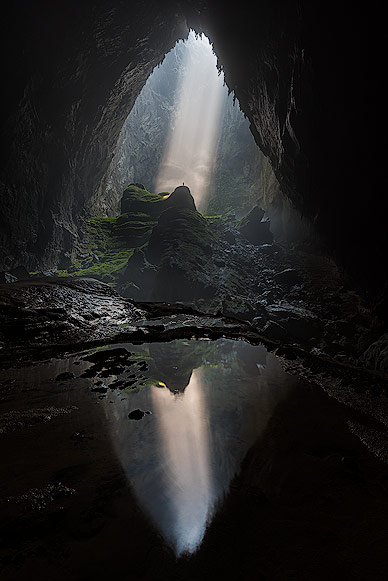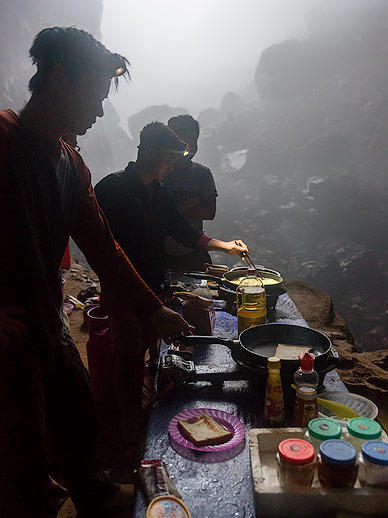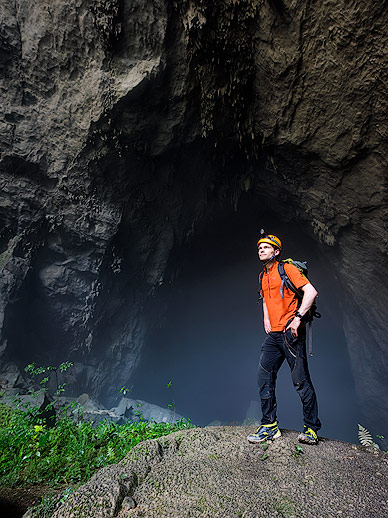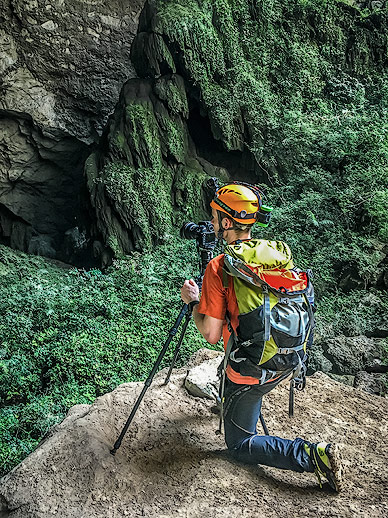Photographing the World's largest Cave
We are in the Phong Nha-Kẻ Bàng National Park in Vietnam on an expedition to the world’s largest cave «Son Doong». We are looking forward to a five-day trip into a unique underground paradise.
DISCOVERY
The cave was found by local farmer Mr. Ho Khanh in 1991. It was not until 2009 that the British Cave Research Association explored the cave and it instantly became one of those amazing things you have to see in your life. In 2014, once the caves had been thoroughly explored, the government granted tour operators permission to host treks through the caves. Since then, approximately 900 licences have been awarded, and I got one of those – Lucky me!
Trekking to the Cave
PART 1: HANG EN CAVE
To reach Hang Son Doong, adventurers must first pass through the third largest cave in the world, Hang En Cave, which is equally spectacular. The cave was recently used as a movie location for the blockbuster Peter Pan. The unique campsite with sandy beach and two natural pools is worth the trip alone.
CONTINUING ON TO HANG SON DOONG
It took us another half day’s walk in the beautiful jungle, where swarms of butterflies joined us. We crossed many knee-deep rivers and finally managed to get to the entrance of Son Doong after a short ascent. Clouds were rising from the cave into the surrounding forest, caused by the cooler air inside meeting the hot air outside. We had to descend 80m down a steep wall, using harnesses and ropes. Standing on slippery ground in a huge dark chamber, you begin to realize how amazing it is… We had definitely reached Son Doong!
The main chamber is more than 5 kilometers (3.1 miles) long, 200m (660 ft) high and 150m (490 ft) wide. At this scale, a half-mile block of 40-story buildings could fit inside this lit stretch of Hang Son Doong cave. The cave features two collapsed dolines, or sinkholes, that let daylight in. This has given life to the cave, making it possible for two separate forests to grow within it, a feature not normally associated with the subterranean recesses of caves.
The main cavern is so large that it has its own climate, and clouds have even been known to form within it. The cave inside has some of the tallest known stalagmites at around 80 meters tall. Son Doong is a remarkable natural wonder in many respects.
Our expedition into the cave consisted of more than 40 people, among them local porters, guides, cooks, cave experts and photographers. Tour organizer Oxalis and team did an absolutely amazing job. It could not have been better – even the food in the cave was excellent. Deb and Howard Limbert led our expedition. Both are members of the British Cave Research Association and they have led all 15 caving expeditions to Vietnam. It was a great benefit for us to have this experienced and knowledgable couple in our team.
PHOTOGRAPHING THE UNDERWORLD
Challenging conditions
The photography was a challenge in some respects. The light conditions were extremely difficult: there was lots of daylight in the dolines (sinkholes) so the dynamic between light and dark was extreme, while our headlights served as light sources in the depths of the cave. The ground was mostly wet, often slippy, and we searched for even ground to no avail. Another challenge was the humidity, but more about that later.
Light the caves
To light the caves, we used three 32,000 lumen LED spotlights, whose batteries could power them for approx. 15 minutes in total. We used walkie talkies to keep in contact with our yellow-clad models and carriers. Sometimes from over a kilometre away, we instructed them as to the perfect lighting and positions. We didn’t have much time; the photos had to be taken in a short window. The thick wafts of mist were typical for the time of year, but prevented us from being able to clearly see far. But it did make for mystical photos of this beautiful underworld.
Camera & LENSES
I had two first-class cameras with me – the Nikon D810 and the D750. The lens I used the most, the Nikon 14-24mm f2.8, was attached to the D810. On the D750, I mostly used the 20mm f1.8 and the 24-70mm f2.8 lenses. For a few shots, I used the 70-200mm lens. The majority of shots were taken using a focal length range of 14-35mm, so I was especially glad of the 14mm. There are people posing in many of the photos, to give a better impression of the relative sizes. My high-aperture lens allowed me to keep to relatively short lighting periods.
Tripod
A stable tripod is at least as important as the camera. And with the Gitzo Traveller GT2542T and the Really Right Stuff (RRS) ball-head BH-30, I had a very good, lightweight combo on hand. The L-plate, also from RRS, was very helpful due to the lack of time and low light conditions, allowing me to quickly swap between landscape and portrait.
Accessories
For both cameras, I used a remote shutter, as you should never touch a camera when shooting a series of photos with different exposure brackets. The filter (polarising and neutral density) also came in handy outside the caves and in the underground jungle. It goes without saying that we had enough memory cards and batteries with us in our bags. To back up the files, I copied the images to an external hard drive (hyper drive).
The number of lens changes should be reduced to a minimum due to the high levels of humidity. For this reason, a second camera is really handy. There was constant dripping in the caves, so you should always keep a dry microfibre polish cloth within reach. By the second sinkhole, ‘Garden of Edam’, my lens was so fogged up that I could only start using it hours later. Using a flash would be pointless due to the unbelievable scale of the cave. However, an external speed light could make for good effects if taking tent and portrait shots.
Cave Photography
I used both cameras exclusively in manual mode. Depending on the situation and light conditions, I focussed manually but often in live view mode at 100% zoom. Although the white balance in the RAW images could be corrected after the fact, I tried to get the right light temperature on site. It’s also important that you know your camera inside out, and that you’ve set up your menu and buttons in a way that makes sense so you can use it in the dark. The same applies to all accessories, such as tripods and remotes. When using more than one camera, the basic configurations should be the same.
Before the trip, I had both my cameras cleaned by Nikon, which was a good decision. My photos showed up hardly any annoying sensor dust, which I appreciated when I was editing them in Lightroom and Photoshop.
INTERESTING FACTS ABOUT SON DOONG
SON DOONG IS IN THE UNESCO-RECOGNISED PHONG NHA-KE BANG NATIONAL PARK, QUANG BINH PROVINCE. IT IS THE BIGGEST KNOWN CAVE IN THE WORLD, RENOWNED FOR ITS UNIQUE ECO-SYSTEM.
TOURS TO SON DOONG ARE RESTRICTED TO 450 VISITORS A YEAR.
LESS PEOPLE HAVE SEEN THE INSIDE OF SON DOONG THAN HAVE STOOD ON THE SUMMIT OF MOUNT EVEREST.
IN OCTOBER 2014, LOCAL AUTHORITIES ALLOWED A VIETNAMESE COMPANY TO SURVEY THE CAVE FOR BUILDING A 10KM SUSPENSION CABLE CAR TO TRANSPORT VISITORS, BUT WORK WAS SUSPENDED FOLLOWING PUBLIC OPPOSITION.
SON DOONG CAVE GETS THE FIRST POSITION IN THE LIST OF 25 GREAT NEW PLACES TO SEE IN THE 21ST CENTURY.
THE UNLIT PORTIONS OF THE CAVERNS ARE HOME TO ALBINO SPECIES THAT HAVE ADAPTED TO LIFE WITHOUT LIGHT. IN THIS ENVIRONMENT, ANIMALS HAVE NO NEED FOR PIGMENT, AND MANY HAVE NO OR DIMINISHED SIGHT, SINCE TOTAL LACK OF LIGHT MAKES EYES USELESS.
OXALIS OFFERING IN 2016 THE FIRST TIME A SPECIFIC PHOTOGRAPHY TOUR TO SON DOONG, LED BY BRITISH CAVING EXPERTS WHO ALL HAVE EXTENSIVE EXPERIENCE WITH PHOTO TEAMS SUCH AS NATIONAL GEOGRAPHIC, BBC, AND RECENTLY ABC (GOOD MORNING AMERICA). THIS TOUR HAS ONLY 3 DEPARTURES IN 2016 (MAX 10 PARTICIPANTS EACH).
GOOD MORNING AMERICA BROADCAST THE REPORT ON MAY 13, 2015, TO SIX MILLION VIEWERS. MILLIONS OF PEOPLE HAVE TRIED TO BOOK TOURS TO SEE THE CAVE AFTER THE FILM WAS BROADCAST.
Publications & Links
- PHOTO ESSAY IN SMILE MAGAZINE (CEBU PACIFIC AIR, 01 MAY 2017)
- BREATHTAKING PICTURES SHOW THE WORLD’S LARGEST CAVE IN VIETNAM WHICH HAS ITS OWN CLIMATE AND CLOUDS (DAILY MAIL, 31 MAY 2016)
- INCREDIBLE PHOTOS CAPTURE THE EERIE BEAUTY OF THE WORLD’S LARGEST CAVE (THE TELEGRAPH, 31 MAY 2016)
- «SON DOONG» – WIE URS ZIHLMANN DIE GRÖSSTE HÖHLE DER WELT FOTOGRAFIERTE (12 JUNE 2016)
- SON DOONG 360, EXPLORING THE WORLD’S LARGEST CAVE BY NATIONAL GEOGRAPHIC
Caters News AgencyINTERVIEW
- WHAT INSPIRED YOU TO VISIT THE HANG SON DOONG CAVE?
-
I was inspired by pictures and movies from National Geographic.
I first heard about the cave sometime in 2014 after the caves had been thoroughly explored.
Our expedition into the cave consisted of more than 40 people, among them local porters, guides, cooks, cave experts and photographers. I had been very lucky getting the last spot. It was the second time they ran a photography tour. The advantage of the photography tour are the LED lightning and portable power stations, which make it possible to lighten up the caves. - WHAT WAS THE EXPERIENCE LIKE? WHAT EMOTIONS DID YOU EXPERIENCE?
-
For reaching Son Doong, adventurers must first pass through the third largest cave in the world, Hang En Cave, which is equally spectacular. The cave was recently used as a movie location for the blockbuster Peter Pan. The unique campsite with a sandy beach and two natural pools alone is worth the trip.
From there, it took us another half day’s walk in the beautiful jungle, where swarms of butterflies joined us. We crossed many knee-deep rivers and finally managed to get to the entrance of Son Doong after a short ascent. Clouds were rising from the cave into the surrounding forest, caused by the cooler air inside meeting the hot air outside.
We had to descend 80m down a steep wall, using harnesses and ropes. Standing on slippery ground in a huge dark chamber, you begin to realize how amazing it is… We had definitely reached Son Doong!
The cave has been subject to two massive collapses to daylight. These two parts are (in my opinion) the absolutely most amazing things on this tour. The southern collapse doline is named «Watch Out for Dinosaurs». It measures 110 meters across at the base, and is colonized by thin forest. The doline collapse almost certainly occurred here due to the weakness of the rocks.
The northern collapse doline is named «Garden of Edam» and is considerably larger, 163 meters across at the base. A thicker forest covers the collapse pile.
Hiking in these caves is quite difficult and exhausting: you never just walk on even ground, it always goes up and down, you have to climb or pass between rocks, and the ground is often slippery or marshy. The sound of the cave is also very special – one moment you here the sound of animals and floating water, and then suddenly it goes completely quiet. You feel very small as a human being in this enormous underground paradise. It is so unearthly beautiful, you would not even be surprised if a dinosaur came round the corner!
- DID YOU HAVE TO SEEK PERMISSION TO EXPLORE THE CAVE? WHAT WAS THAT PROCESS LIKE?
-
Oxalis Adventures is the only operator bringing adventurers to Son Doong cave. They are working closely with the government to ensure a sustainable future for the cave: in 2014, they were able to take 224 people to Son Doong. Since then, tours to Son Doong are restricted to 450 visitors a year.
In 2016, Oxalis has been offering a specific photography tour to Son Doong for the first time, led by British caving experts. This tour only departs 3 times in 2016 (max 10 participants each).
- HOW LONG DID IT TAKE FOR YOU TO EXPLORE THE CAVE? WHAT WAS IT LIKE INSIDE?
-
To be in this huge cave felt like being in another world. By the time we entered the cave it was very humid and foggy. On some places you weren’t able to see the walls on your right and left or the ceiling, even with your powerful headlamp. Son Doong means mountain river cave and we did a few river crossings. You wouldn’t expect to cross a river underground!
The camps (see below) are amazing as well. However, my highlight were the two dolines («Watch out for Dinosaurs» and «Garden of Edam»). I have never been to a peaceful place like that before – a natural wonder at its best!
Itinerary:
- Day 1: Phong Nha – Ban Doong Village – Hang En Cave (World’s third largest cave)
- Day 2: Hang En Cave – Son Doong Entrance – Hand of Dog – Son Doong Camp 1
- Day 3: Son Doong Camp 1 – Doline 1 (Watch out for Dinosaurs) – the End of the cave (Great Wall of Vietnam) – Son Doong Camp 2
- Day 4: Son Doong Camp 2 – Fossil Passage – Hang En Cave
- Day 5: Hang En Cave – Ban Doong Village – Phong Nha
- DID YOU CAMP INSIDE THE CAVE? IF SO WHAT WAS IT LIKE TO SLEEP IN THERE AT NIGHT
-
On the first and the fourth night we camped in Hang En Cave, or ‘swift cave’, named after the birds that nest inside it. Its immaculate campsite – a sandy beach inside a cave with a glistening turquoise lagoon on one side and a flowing river on the other – may be one of the most beautiful encampments found anywhere in the world.
After sunset thousands of swift fly into the cave to their nests. To hear birds flying and tweeting was very peaceful. However, it was a good decision to cover the dinner table with a tent roof!
The first camp in Son Doong Cave was another highlight of this tour. You could watch the clouds forming around the first doline. Stunning! Other than the camp in Hang En Cave, this camp was completely quiet.
The second camp beneath the second doline (Garden of Edam) is the favorite camp of the porters. It felt like being in a jungle when you look up to Garden of Edam. On the other side, you were looking into the cave. This combination makes this place so special and beautiful. It is a place where you could stay much longer than just for one night.
This is how campsites in paradise must look like!
- CAN YOU BRIEFLY DESCRIBE THE PROCESS YOU WENT THROUGH TO CREATE EACH IMAGE?
-
The photography was a challenge in many respects. The light conditions were extremely difficult: there were lots of daylight in the dolines (sinkholes), so the dynamic between light and dark was extreme, while our headlights served as light sources in the depths of the cave. The ground was mostly wet, often slippery, and we were searching for even ground to no avail. Another challenge was the humidity.
To light the caves, we used three 32,000 lumen LED spotlights, whose batteries could power them for approx. 15 minutes in total. We used walkie talkies to keep in contact with our yellow-clad models and carriers. Sometimes from over a kilometre away, we instructed them as to the perfect lighting and positions. We didn’t have much time; the photos had to be taken in a short window. The thick wafts of mist were typical for this time of year, but prevented us from being able to see clearly into the distance. But it was good for making for mystical photos of this beautiful underworld.
There are people posing in many of the photos, which is to give a better impression of the relative sizes. My high-aperture lens allowed me to stick to relatively short lighting periods.
The number of lens changes should be reduced to a minimum due to the high levels of humidity. For this reason, a second camera comes in really handy. There is constant dripping in the caves, so you should always keep a dry microfibre cloth within reach. At the second sinkhole, ‘Garden of Edam’, my lens was so fogged up that I could only start using it again hours later.
Using a flash would be pointless due to the unbelievable scale of the cave. However, an external speed light could make for good effects when taking tent and portrait shots.
I used both cameras exclusively in manual mode. Depending on the situation and light conditions, I focussed manually but often in live view mode at 100% zoom. Although the white balance in the RAW images could be corrected after the fact, I tried to get the right light temperature on site.
It is also important that you know your camera inside out, and that you set up your menu and buttons before in a way that makes sense so you can use it in the dark. The same applies to all accessories, such as tripods and remotes. When using more than one camera, the basic configurations should be the same.
Before the trip, I had both my cameras cleaned by Nikon, which was a good decision. My photos showed up hardly any annoying sensor dust, which I appreciated when I was editing them in Lightroom and Photoshop.
- WHAT KIND OF EQUIPMENT DID YOU USE TO CAPTURE YOUR IMAGES AND VIDEO?
-
I had two first-class cameras with me – the Nikon D810 and the D750. The lens I used the most, the Nikon 14-24mm f2.8, was attached to the D810. On the D750, I mostly used the 20mm f1.8 and the 24-70mm f2.8 lenses. For a few shots, I used the 70-200mm lens. The majority of shots were taken using a focal length range of 14-35mm, so I was especially glad of the 14mm.
A stable tripod is at least as important as the camera itself. And with the Gitzo Traveller GT2542T and the Really Right Stuff (RRS) ball-head BH-30, I had a very good, lightweight combo on hand. The L-plate, also from RRS, was very helpful due to the lack of time and low light conditions, allowing me to quickly swap between landscape and portrait.
For both cameras, I used a remote release, as you should never touch a camera when shooting a series of photos with different exposure brackets. The filter (polarising and neutral density) also came in handy outside the caves and in the underground jungle. It goes without saying that we had enough memory cards and batteries with us in our bags. To back up the files, I copied the images to an external hard drive (hyper drive).
- HOW MUCH OF THE CAVE DID YOU EXPLORE? ARE THERE ANY PARTS OF THE CAVE THAT ARE STILL LEFT UNDISCOVERED?
-
In terms of size the cave is pretty much explored but there are still many mysteries and undiscovered things:
„The lost world of Son Doong cave still has its mysteries, and much of the cave system remains unexplored. Perhaps one of the most exciting areas of further exploration lies in the prospect of finding new species of plants and animals here. The animals of the cave can generally be categorized into two types; those that live in the forested area and those that dwell in the inky black recesses of the enclosed areas. Already several new species have been discovered here, including several species of plant and insect, as well as a new type of gecko, a tree frog, and a striped hare. Since only a very few expeditions have attempted to catalog species within the cave, there are undoubtedly more to be found. There have been several species that have been spotted that have not been identified as of yet, including a possibly new type of monkey, and mysterious creatures have been seen skittering through cave passages and even swimming through the river and lake here. One of the only scientists to have studied the dark interior passages of the cave, German biologist Anette Becher, described spotting a myriad of as yet unknown fish, insects, and millipedes within the gloom, many of them albino and sightless. It seems that we are only beginning to scratch the surface of the biodiversity that may lie here waiting to be discovered. Other mysteries of Son Doong cave include the source of the underground river that runs through the cave and an only recently discovered side cave that is full of rare and undescribed fossils, many of them very large and some of them dated as being around 300 million years old. The original team to explore Son Doong has plans to launch another extensive expedition in order to further investigate the many mysteries of the caves.“ (http://mysteriousuniverse.org)
- HOW LARGE IS THE CAVE?
-
Son Doong Cave is approximately 9km long. Within its caverns lie a jungle and a river, and the cave is large enough to fit a 40-storey skyscraper inside. The main chamber is more than 5 kilometers long, 200m high and 150m wide. It is so large that it has its own climate, and clouds have even been known to form within it.
The cave inside has some of the tallest known stalagmites, which are around 80 meters tall.
